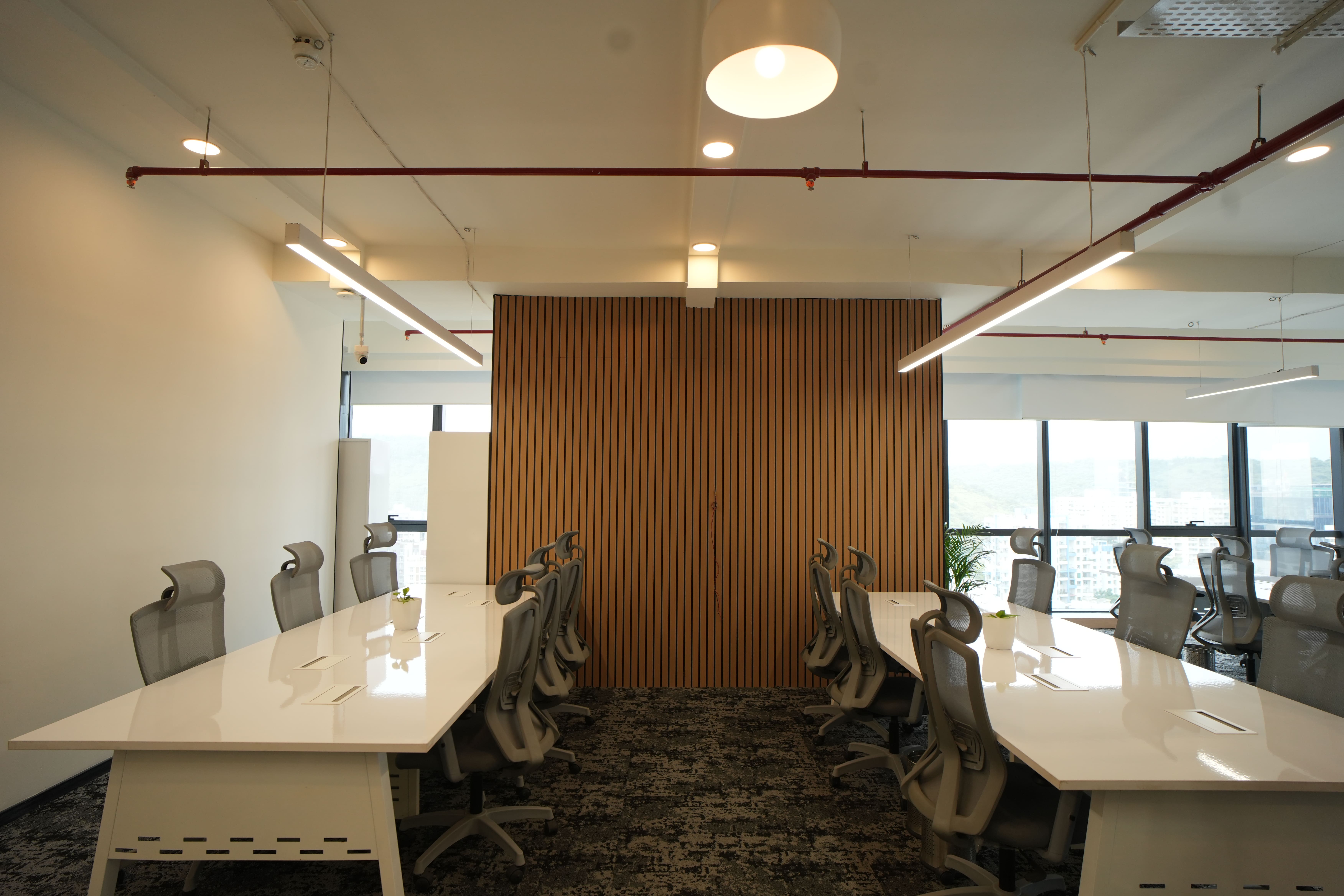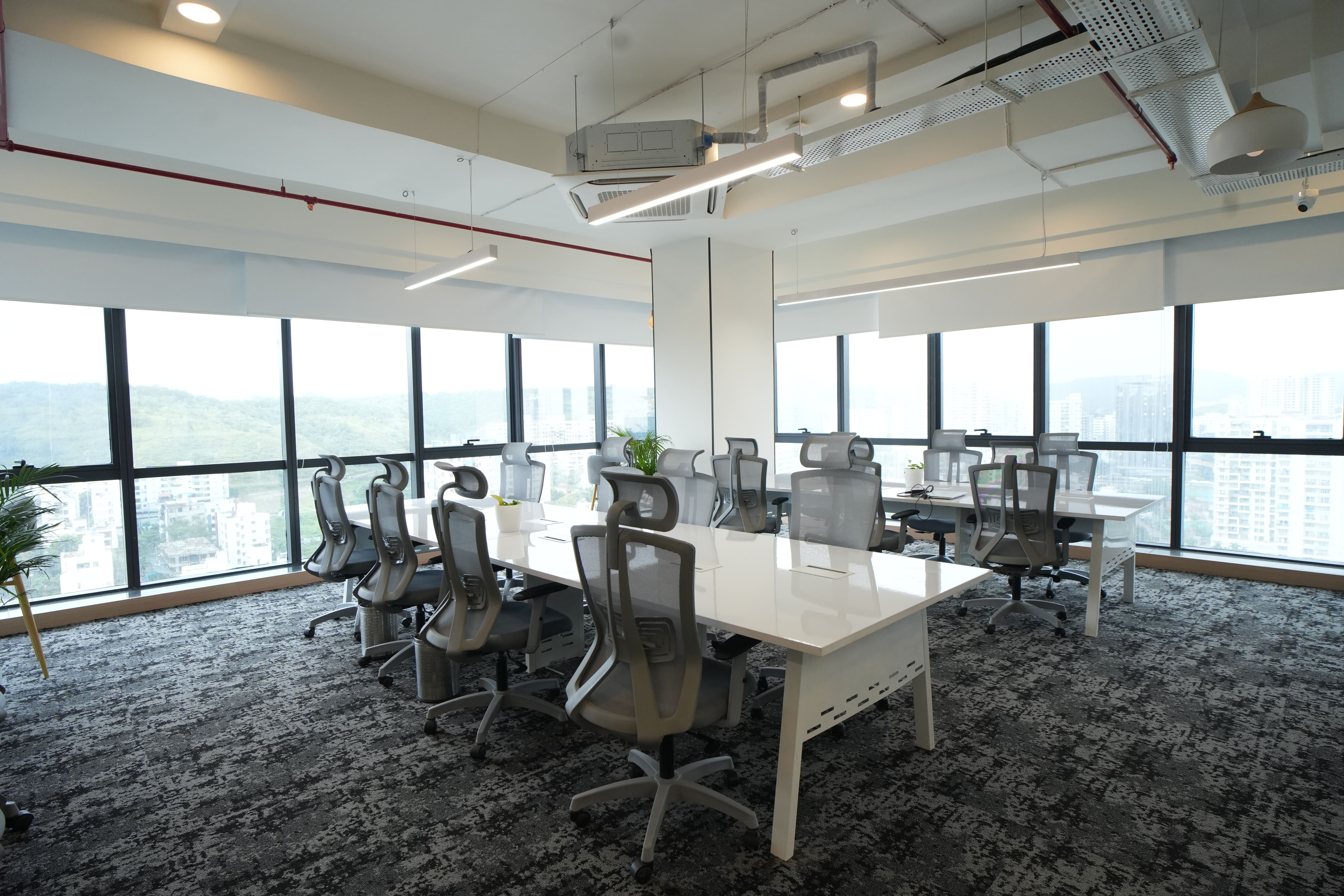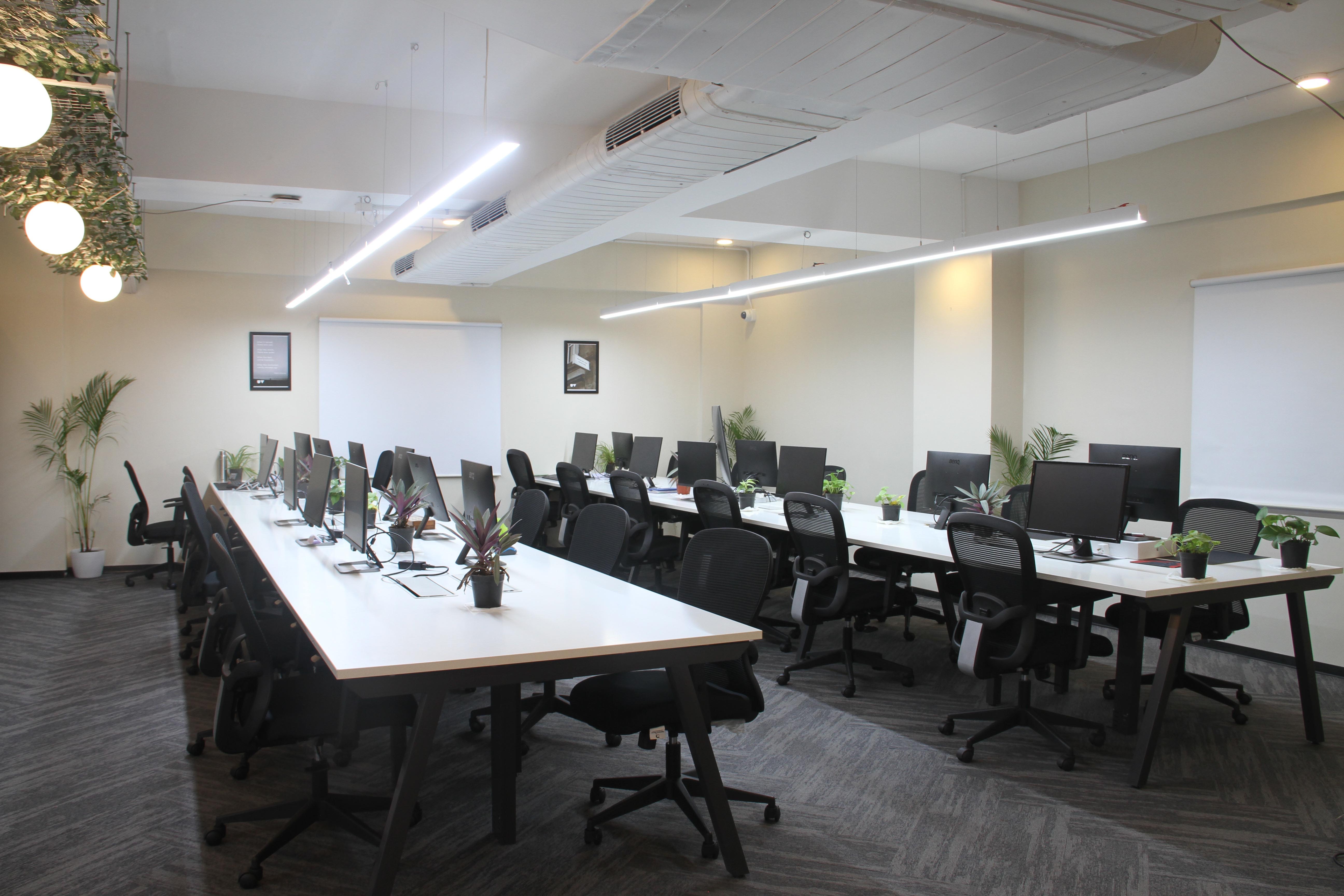Are you ready to enter the fascinating world of office design? Get your fancy pens and notepads because we're about to embark on a journey that will change the way you think about your workplace. That's right, the design of your office can significantly impact your mood, behaviour, and productivity. And, believe it or not, every element from the color on your walls to the type of chair you sit in can influence your overall well-being.
Let's start with color, shall we? If you're feeling blue, you might want to try surrounding yourself with shades of blue. Blue is the most productive color, and it can create a sense of calm and focus. If you're feeling adventurous, try adding some pops of bright colors like red, orange, or yellow to your office space. These colors can energize you and help you think outside the box. Just be careful not to go overboard, or you might end up feeling like you're working in a carnival tent.
But, hold on a second! What if you're a fan of muted colors like green, grey, or beige? Fear not, my friends, because these colors can also have a positive impact on your mood. Green is known for its calming effects and can make you feel more relaxed and refreshed. Grey is a neutral color that can create a sophisticated and professional vibe. And beige, well, beige is beige. But it can add warmth and coziness to your workspace.
Now, let's move on to layout. The traditional cubicle farm is slowly becoming a thing of the past, and open office spaces are all the rage. Collaborative spaces can promote communication and teamwork, but they can also be a hotbed of distractions and noise. If you're someone who needs quiet and privacy to focus, an open office plan might not be your cup of tea. But don't worry, there are other options available. A hybrid office layout that combines open and closed spaces can give you the best of both worlds. You can choose where you want to work based on your mood and the task at hand.
And what about furniture? You might not think of your chair or desk as having a significant impact on your mood, but think again! Ergonomic chairs and desks can reduce the risk of physical health problems like back pain and carpal tunnel syndrome. Plus, a comfy chair and a well-positioned desk can help you avoid fatigue and improve your posture. Just don't go overboard on the size of your furniture. A massive desk might make you feel like a CEO, but it can also make your office feel cramped and cluttered.
Now, let's not forget about natural elements like plants and natural lighting. Plants can add a touch of nature to your office space and create a sense of calmness and relaxation. Plus, they can help purify the air and improve indoor air quality. And natural lighting? Well, that's a game-changer. Exposure to natural light can increase productivity, reduce stress, and make you feel like you're living your best life. If you're lucky enough to have access to natural light in your office, make the most of it. Sit near a window, take breaks outside, and soak up that Vitamin D.
In conclusion, the psychology of office design is a powerful thing. From the color on your walls to the type of chair you're sitting in, every detail can impact your mood and behaviour. When designing your office space, it's important to consider your company's values, industry, and employee preferences. A well-designed office can lead to happier, healthier employees and a more successful company overall. So, the next time you're feeling stuck in a rut at work, take a closer look at your office space. Are you surrounded by colors that make you feel productive and energized? Is your furniture comfortable and ergonomic? Are you able to work in a space that promotes focus and creativity? If not, it might be time to make some changes. But before you start rearranging your furniture and painting your walls, it's important to get feedback from your colleagues. Office design is not a one-size-fits-all solution, and what works for one person might not work for another. So, gather your team and ask for their input. What kind of environment do they prefer? Are they more productive in open or closed spaces? Do they have any suggestions for improving the office layout or decor?
Once you have a clear understanding of what your team needs and wants, it's time to get creative. Don't be afraid to experiment with different colors, textures, and furniture styles. Mix and match elements that inspire you and make you feel good. And remember, your office design should reflect your company's values and brand. If you work in a creative industry, your office should reflect that with bold colors and unique design elements. If you work in a more formal industry, your office should be more traditional and sophisticated.
Now, I know what you're thinking. All this talk about office design is great and all, but what about the budget? Office design can be expensive, and not every company has the resources to completely overhaul their workspace. But fear not, my friends, because there are plenty of cost-effective ways to improve your office design. Paint is a relatively cheap way to transform a space, and adding a few plants can make a big impact without breaking the bank. You can also consider investing in quality ergonomic furniture that will last longer and improve your employees' health. In the end, the key to a successful office design is balance. You want to create an environment that promotes productivity, creativity, and well-being without sacrificing comfort or functionality. And remember, your office design is not set in stone. It's an ever-evolving process that should adapt to the changing needs of your team and company.
So, there you have it, folks! The psychology of office design is a complex and fascinating subject that can have a significant impact on your work and overall well-being. Whether you're a fan of bold colors, open spaces, or cozy nooks, there's an office design out there that's perfect for you. So, go forth and design your dream workspace!
FAQ
What types of office spaces does Urban Vault offer?
Is Urban Vault suitable for startups and freelancers?
Is there professional support available at Urban Vault's managed office spaces?
Can I customize my office space at Urban Vault?
What is the per seat cost at Urban Vault?

.webp)
.webp)



.webp)




